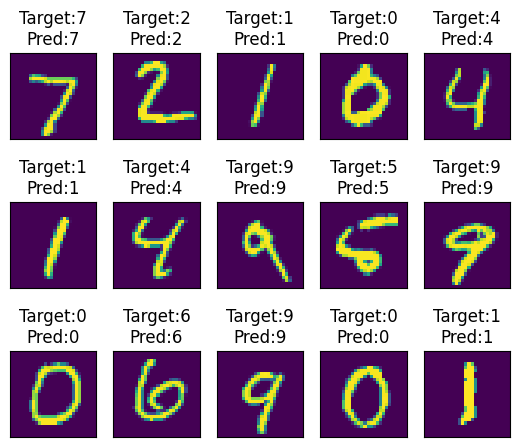Velog : [PyTorch] AutoGrad란 무엇인가?
최근 'SKT FLY AI'에서 공부하며 순전파와 역전파에 대해 강의를 들으며 갑자기 '순전파 역전파를 전개해본적이 있던가?' 라는 생각이 들어 계산해보려 하니 간단한 레이어 조차 계산하지 못하였습니다.
과거에도 PyTorch 독립 레이어 만들기(Grad 끊기) 글을 작성하면서도 코드로 실험을 하며 알았지 정확히 왜 레이어가 단절되는지에 대해서는 정확히 몰랐던 거 같습니다.
경사하강법에 대해 이해하고 그래디언트의 흐름을 파악하는 것이 주요 목표이며, 외부 프레임워크를 최대한 쓰지 않고 직접 순전파 역전파를 구현하고 학습까지 진행하고자 한 프로젝트입니다.
- Optimize the code of the Operation method in parameter.py
- Implements the array manipulation operation(ones, zeros etc...)
- Implements the convolution layer
- Implements the Non-Linear functions
- Fix inplace operation (Set Method)
- Train/inference with real dataset(Boston, MNIST, etc.)
- Optimize the speed of convolution operation
- Implements custom array object
-
MyTorch Clone
git clone https://github.com/PreFKim/MyTorch.git pip install numpy matplotlib pytorch cd MyTorch -
사용할 라이브러리 Import
import numpy as np import src as my import matplotlib.pyplot as plt from dataset import *
-
학습에 사용할 데이터셋 준비
x, y = boston() print(x.shape, y.shape) # Split train_idx = [] test_idx =[] for i in range(len(x)): if i%4!=0: train_idx.append(i) else: test_idx.append(i) train_x = x[train_idx] train_y = y[train_idx, np.newaxis] test_x = x[test_idx] test_y = y[test_idx, np.newaxis] # Noramlize min_val_x, max_val_x = train_x.min(0), train_x.max(0) min_val_y, max_val_y = train_y.min(0), train_y.max(0) train_x = (train_x-min_val_x)/(max_val_x-min_val_x) test_x = (test_x-min_val_x)/(max_val_x-min_val_x) train_y = (train_y-min_val_y)/(max_val_y-min_val_y) # Wrap with Param object train_x = my.Param(train_x) train_y = my.Param(train_y) test_x = my.Param(test_x) test_y = my.Param(test_y) train_x.shape, train_y.shape, test_x.shape, test_y.shape
-
모델 학습 파이프라인 작성 (Pytorch와 유사한 구조)
class Model(my.layers.Module): def __init__(self): self.l1 = my.layers.Linear(13, 32) self.l2 = my.layers.Linear(32, 32) self.l3 = my.layers.Linear(32, 32) self.l4 = my.layers.Linear(32, 1) self.activation = my.layers.ReLU() def forward(self,x): out = self.l1(x) out = self.activation(out) out = self.l2(out) out = self.activation(out) out = self.l3(out) out = self.activation(out) out = self.l4(out) return out model = Model() optim = my.optimizers.Adam(model.parameters(), lr=1e-3) for i in range(1000): pred = model(train_x) loss = ((pred - train_y)**2).mean() loss.backward() optim.step() optim.zero_grad() print(loss)
-
평가 및 시각화
pred_y = model(train_x) pred_y = pred_y*(max_val_y-min_val_y)+(min_val_y) orig_train_y = train_y*(max_val_y-min_val_y)+(min_val_y) train_mae = (abs(pred_y-orig_train_y).mean()).data plt.figure(figsize=(15, 3)) plt.subplot(1, 2, 1) plt.title(f"Boston Dataset (Train)\nMAE: {train_mae}") plt.plot(orig_train_y.data, label="True") plt.plot(pred_y.data, label="Pred") plt.legend() pred_y = model(test_x) pred_y = pred_y*(max_val_y-min_val_y)+(min_val_y) test_mae = (abs(pred_y-test_y).mean()).data plt.subplot(1, 2, 2) plt.title(f"Boston Dataset (Test)\nMAE: {test_mae}") plt.plot(test_y.data, label="True") plt.plot(pred_y.data, label="Pred") plt.legend() plt.show()

